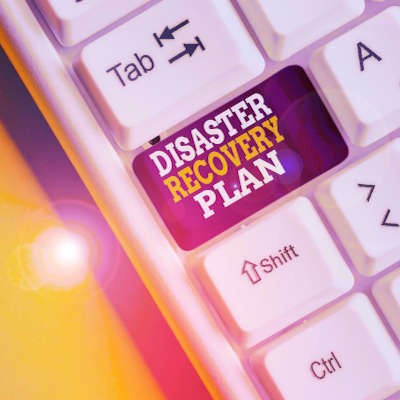When we are talking about the continuity of your business, we typically use the colloquialism “disaster” for just about anything that could put the brakes on your business’ ability to do business. But what happens when that “disaster” is an actual disaster and threatens to derail your business completely? Today, we take a look at some disaster preparedness tips that can quite literally save your business from ruin.
Washington Works Blog
Most business owners that rely on their IT have heard about managed It services. Many already subscribe to some form of outsourced IT service. It is one of the best ways to cut down your business’ operational costs while gaining value through the use of services that, if they were to be purchased intermittently, would cost a lot more. Today, we thought we’d list some of the most important variables you should consider if you are looking to choose a managed IT services provider.
Having a comprehensive data backup and recovery strategy in place can absolutely save your business. This means it’s extremely important. Unfortunately, too many businesses don’t consider their backup and recovery systems until it is too late. Let’s unwrap what makes a successful backup and recovery platform work, and how to get one for your business.
Know it or not, your business takes in and creates a lot of data. Most of this data, like most items and information, isn’t worth much. Some of it, however, is crucial to your business’ ability to operate. If a situation comes along where you are faced with the prospect of losing your data, it will be much better to have a backup plan in place than not.
When considering a continuity plan for your business, you need to consider some scenarios that may not ever happen. This is called risk management and it is the basis of keeping your business up and running regardless of the situations that it encounters. This month, we thought we would outline some of the variables that need to be addressed when creating a comprehensive business continuity plan.
How confident are you that your business could survive a data disaster of any size and scale, from a single misplaced file to a complete loss of your entire onsite infrastructure? Being prepared to recover from any version of events is key to your business’ success. Let’s discuss this concept, which is widely known as IT resilience.
Your data is vital for your organization’s continuity. Your data consists of everything from your company documents, accounting records, client contact information, prospects and leads, procedures, and everything else needed for you to keep operations running smoothly. That’s why all businesses need a solid backup solution that is monitored and tested regularly.
The Novel Coronavirus has made its way around the world and it has certainly changed the way a lot of businesses do things. Some businesses have put in some type of disaster recovery platform. This is basically a plan for returning to continuity after some type of disaster, but we are seeing that many business continuity plans were not broad enough to take on a worldwide pandemic. Sadly, many of these businesses won’t open again.
World events have always had a big impact on the banks that one finds on Wall Street, but in many ways, the one that coronavirus (COVID-19) has demonstrated has been unprecedented. As such, it almost provides a case study of the importance that disaster recovery planning has for any business… Wall Street institutions included.
For the modern business, ensuring that you have contingencies in place will go a long way toward keeping you in business if disaster strikes. One of the contingencies many businesses choose to make as part of a business continuity strategy is a disaster recovery plan. Disaster recovery is more than restoring data, it can mean mobilizing people and capital against time. Let’s take a look at two of the core components of a comprehensive disaster recovery strategy, Recovery Time Objective and Recovery Point Objective.
Maintaining a proper data backup system is one of the most important parts of business continuity, even if it’s something you’d rather not think about. If you don’t take data backup seriously, your organization is at considerably greater risk compared to what it would be like if you had it. We’ll walk you through the proper steps toward making your organization’s future more secure through data backup.
Disasters are a very real possibility that businesses have to deal with, but not all disasters come in the form of a flood or fire. You can predict weather effects that can create problems for your business, like thunderstorms and ice storms that bring down power lines, but you can’t possibly predict when and how your organization will suffer from a data loss incident. We’ll discuss in-depth how your business can save itself the trouble of dealing with cyberattacks and user error--particularly in regard to data backup and disaster recovery.
What one organization considers a disaster might be much different than what another business might see as disastrous. Perhaps one sees the loss of a few hours and a few files as something that can be recovered, while another sees every lost moment and each iota of data as a catastrophe. Whichever camp you find yourself in, you need to be able to do two things: first, gauge how serious a given data loss disaster is, and secondly, establish what must be done to get back in action following said disaster.
Nobody ever wants to admit that their business has a problem with security. Unfortunately, as the one responsible for the future of your organization, you have to consider all possible outcomes of any potential data loss incident. Furthermore, many of these incidents are beyond your control. Thankfully, you can soothe the pain of a data loss disaster by thinking ahead and planning for the worst.
Not all companies are prepared to deal with the costs associated with downtime. Any situation in which your organization cannot access important information or can’t operate with efficiency is something which needs to be prepared for; otherwise, you risk more than you know. We want to help protect your business when it needs it most.
There’s a dangerous misconception that a lot of business owners have about data backup. Too often, an SMB will have a data backup solution in place and the business owner will feel like they’re fully prepared to handle a data loss disaster--without looking into the data recovery capabilities of their backup solution (or the lack thereof). This kind of oversight can lead to a very costly surprise when a disaster strikes and there’s no easy way to restore the lost data.

















